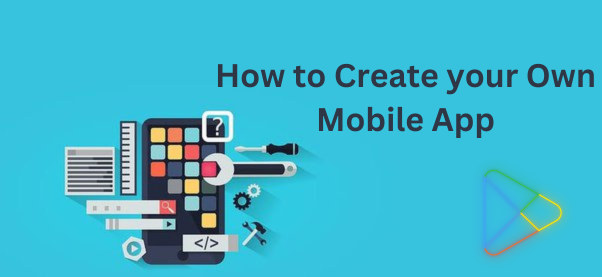How To Create Your Own Mobile App


Cyril Chacko
a year ago
Decided to make your own multi-purpose app but don't know where to start? Getting started can be overwhelming, especially if you've never done coding or programming before. However, with a little patience and dedication, your own cultivation can become a reality.
Before you create an application, you should consider what you want it to do and what it will be used for. This will help guide the development process and ensure that the goals of the application are met.
Once you have an idea, you can follow the steps below to start making your multifunctional app.
1. Describe the Features and Functions of your Application
Start by describing what your application will contain. You should decide without a doubt what the purpose of your app is, consider your target customers and their needs, and decide which features will help you the most.
2. Formatting Your Application
Once you have determined what is important to include, start formatting your application. A plan describes how the application will work, how the user navigates to the application, what information is displayed, where the buttons are placed, etc. shows.
3. Make a Mockup of your Application
Once you have a general idea of the format of your application, create detailed drawings or high-level mock-ups to show how your application will look and work.
This will help you diagnose problems that may occur temporarily before continuing with the development of the website.
Consider what utilities you will include in your application and how you will design the user interface.
4. Choose a Development Platform
When building an application, there are several levels to choose from. The two most popular platforms are iOS (Apple) and Android (Google), which provide developers with their own Development Kits (ADK).
At the final stage, where the development process begins, you must choose which level to build.
5. Learning for the Program
Learning for the program is not easy, but it is the foundation for building practice. There are many great resources to help you with math, including online learning and tutoring. Some programming dialects include Java, Quick, Objective-C, and C++.
6. Start Writing your Application
Once you have a good understanding of the business model, you can start writing your application. Start by creating the skeleton of the application, then add work.
7. Test your Application
After you write your application code, you should test it to make sure it works as planned.
You can test the app yourself or hire testers to test it on different devices.
8. Submit your App
You can submit your app after testing and making changes. You must submit your app to the app store at the selected time and wait for approval. Feel free to promote your app with breaks, polls, alerts and important news.
9. Return your Application to
Starting your application is not the end of the road. After booting you will be sure to support the client. This includes responding to criticism, addressing issues, and making corrections as needed.
In conclusion, making your own portable application is a daunting task.
But by breaking the process down into key steps, focusing on the end goal, and using available resources, you will make your vision a reality.
By following the steps outlined on this post, you should be able to create your own versatile app to meet the needs of your target audience.